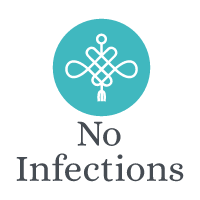Understanding the New Strain of Avian Influenza: A Growing Concern
As the world continues to navigate the aftermath of the COVID-19 pandemic, another potential threat to global health is emerging: a new strain of avian influenza. While avian influenza, commonly known as bird flu, is not a new phenomenon, recent developments have raised concerns among scientists and health authorities worldwide. This blog aims to provide a comprehensive understanding of the new strain, its implications, and the measures being taken to mitigate its impact.
What is Avian Influenza?
Avian influenza is a viral infection that primarily affects birds but can sometimes infect humans and other animals. The virus belongs to the Orthomyxoviridae family, and its various strains are categorized based on two surface proteins: hemagglutinin (H) and neuraminidase (N). Common strains include H5N1, H7N9, and H9N2.
The Emergence of a New Strain
The new strain of avian influenza, identified as H5N8, has recently been detected in several countries across Europe, Asia, and Africa. While H5N8 has been known to infect birds for several years, recent mutations have increased its transmissibility and pathogenicity. Notably, the virus has been found in wild birds, domestic poultry, and, in rare cases, humans.
Why is This Strain Concerning?
Increased Transmissibility: The new strain shows enhanced capability to spread among bird populations. This poses a significant threat to the poultry industry, which could face devastating losses.
Potential Human Transmission: Although human infections are rare, the few reported cases of H5N8 in humans have raised alarms about the virus's potential to cross the species barrier more effectively.
Economic Impact: The poultry industry is a critical source of livelihood and food security for millions. An outbreak could lead to culling of birds, trade restrictions, and economic losses.
Public Health Risk: The potential for a pandemic exists if the virus mutates further to become easily transmissible between humans. Vigilance is essential to prevent such a scenario.
Implications for Public Health and Agriculture
The emergence of the H5N8 strain has prompted swift action from health and agricultural authorities:
Surveillance and Monitoring: Enhanced surveillance systems have been put in place to monitor the spread of the virus among bird populations and detect any potential human cases early.
Biosecurity Measures: Poultry farms are implementing stricter biosecurity protocols to prevent the introduction and spread of the virus. These include controlling access to farms, using protective clothing, and ensuring proper sanitation.
Vaccination Programs: Efforts are underway to develop and distribute vaccines for poultry to curb the spread of the virus. Human vaccine development is also being explored as a precautionary measure.
Public Awareness Campaigns: Educating the public, especially those working in close contact with birds, about the risks and preventive measures is crucial to minimizing human exposure.
